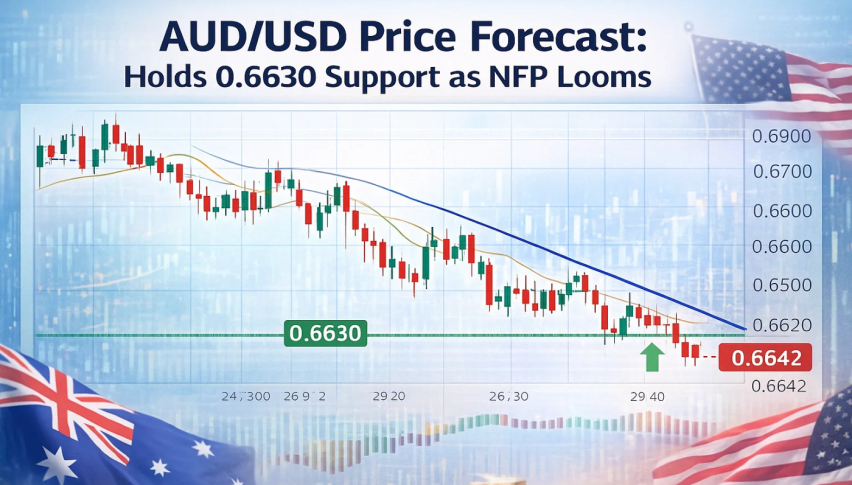Bearish Bias in Crude Oil Continues – Stronger Dollar Dominates!
Today in the Asian trading session, the WTI crude oil failed to stop its early-day losing streak. It remained depressed around below the $52
Today, during the Asian trading session, WTI Crude Oil failed to stop its early-day losing streak, remaining depressed around the $ 52.50 level, as the ever-increasing numbers of COVID-19 cases has raised worries about the weakened fuel demand, after the UK imposed travel restrictions. Meanwhile, China (the world’s 2nd-largest oil consumer) has also decided to limit Lunar New Year trips, in an attempt to prevent a surge in COVID-19 cases, which put some additional pressure on the crude oil prices.
Furthermore, the bearish sentiment surrounding the crude oil prices could also be attributed to the souring market mood, which favored the safe-haven US dollar and weighed on crude oil, as the US dollar usually moves inversely to crude oil. The US stimulus gridlock and the EU-UK tussle over the lack of vaccines in the Union also played a significant role in undermining the crude oil prices. In contrast to this, the upbeat EIA data released yesterday, which showed a larger-than-expected draw in US crude oil, keeps challenging the bearish bias in crude oil. The optimism linked to the rollout of COVID-19 vaccines is also helping to limit deeper losses in the crude oil prices. At the moment, crude oil is trading at $ 52.61, and consolidating in the range between 52.31 and 52.80.
As we have already mentioned, crude oil received a boost from the upbeat EIA data, which indicated a bigger draw in US crude oil supplies than expected, which investors accredited to an increase in US crude exports and a decrease in imports. On the data front, the EIA report showed a draw of 9.910 million barrels for the week ended Jan. 22, compared to the 430,000-barrel draw in the forecasts and the 4.351-million-barrel draw reported during the previous week. It is also worth recalling that this draw was the largest recorded since July 2020.
Despite the supporting data, the ever-increasing numbers of COVID-19 cases globally has pushed more countries, such as the UK and China, into deep lockdown measures, resulting in increased fuel demand worries, which have contributed to the losses in crude oil. As per the latest report, UK Prime Minister Boris Johnson has declared a clampdown on travelers from 22 high-risk countries that have reported variants of the virus, including South Africa. Travelers from these countries will be required to be in quarantine for ten days, and are barred from outbound trips, unless there are exceptional reasons. It is worth recalling that the UK has been in lockdown since January, with schools, restaurants and pubs closed, and people advised to stay home as much as possible. Scotland, Wales and Northern Ireland, whose governments make their own decisions on anti-coronavirus measures, are also facing many restrictions.
On the other side of the planet, the fuel demand concerns in China (the world’s largest oil importer) are gaining more attention, as the recent outbreak of COVID-19 cases is expected to put a dent in the Lunar New Year travel season. It is worth mentioning that flights out of Shanghai are already being canceled. Therefore, the COVID woes are keeping the energy industry under pressure, which in turn is putting pressure on the higher-yielding crude oil.
The global equity market failed to stop its negative performance of the previous day, remaining sour on the day, amid the lack of any major data/events. Meanwhile, the US stimulus impasse and the EU-UK tussle over the lack of vaccine in the area, also exerted downside pressure on the market sentiment. Besides this, another reason for the risk-off market sentiment could also be associated with the coronavirus (COVID-19) woes and doubts over global economic recovery.
As a result, the broad-based US dollar managed to extend its early-day winning streak, remaining bullish during the Asian session, as investors still prefer to invest in the safe-haven assets in the wake of the risk-off market sentiment. It is worth recalling that US stocks saw the biggest 1-day percentage decline in 3-months during the previous session, with Asian stocks mostly on a downward trend on Thursday. However, the gains in the greenback were seen as one of the key factors that kept the oil prices under pressure, as the weaker USD tends to make it cheaper for holders of other currencies to purchase crude oil. Meanwhile, by 8:54 PM ET (1:54 AM GMT), the US Dollar Index, which tracks the greenback against a bucket of other currencies, had risen by 0.06%, to 90.642.
Moving on, the market traders will keep their eyes on the preliminary reading of the fourth quarter (Q4) US GDP, which is expected to come in at 3.9% QoQ, versus the previous 33.4%. In the meantime, the familiar risk catalysts, like geopolitics and the virus woes, will also be key to watch. Good luck!
- Check out our free forex signals
- Follow the top economic events on FX Leaders economic calendar
- Trade better, discover more Forex Trading Strategies
- Open a FREE Trading Account


